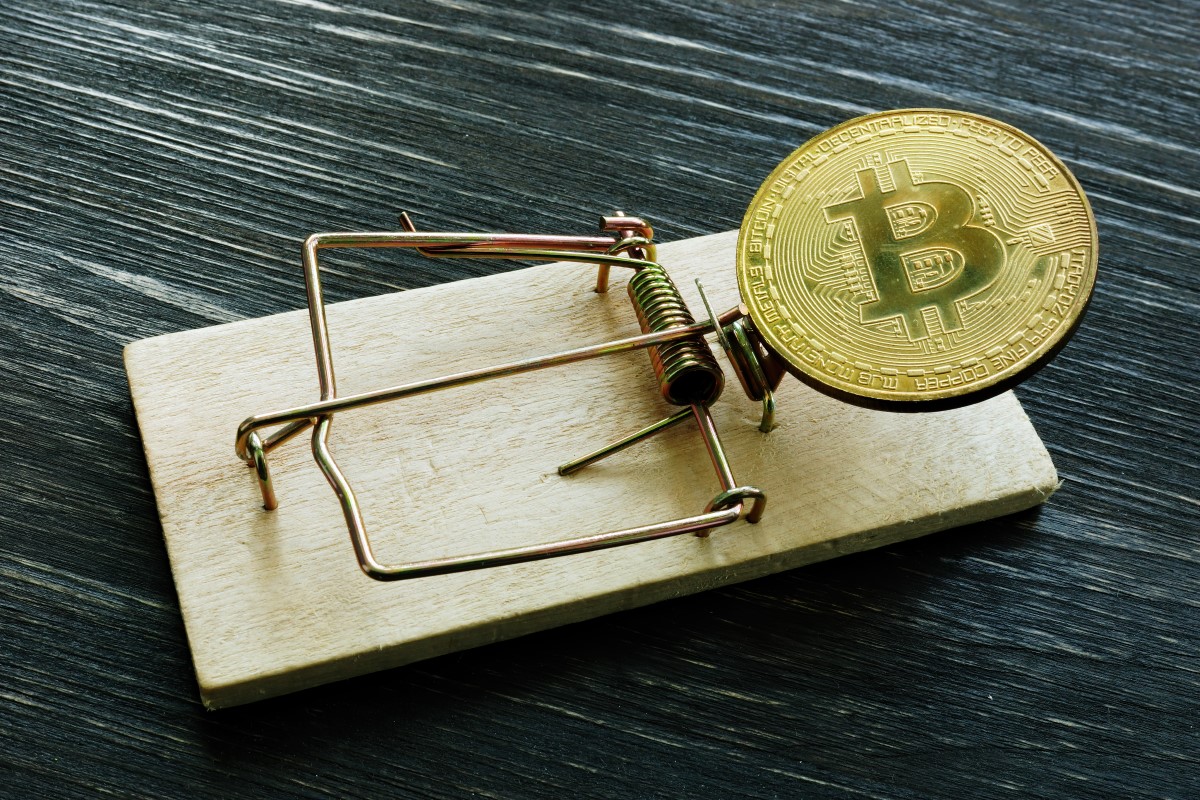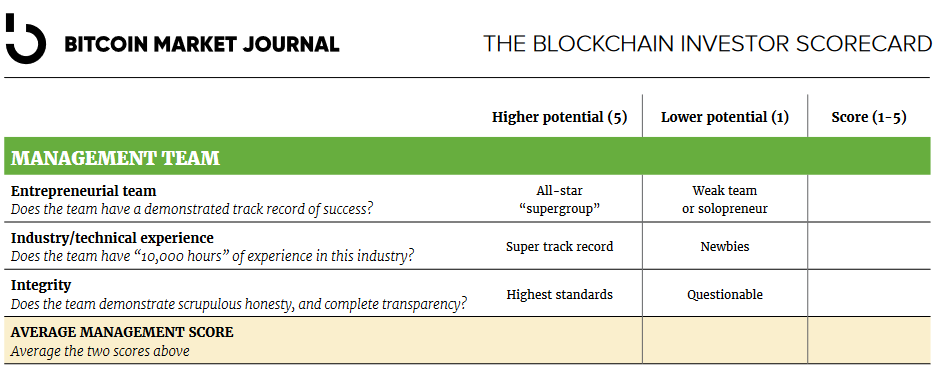
Summary: How can we get better at spotting risky crypto projects, before they fail? Subscribe here and follow me to get more mental tips and tricks.
The crypto investing industry needs a framework for measuring risk.
By “risk” I don’t mean whether a crypto investment is volatile; I mean whether it could collapse entirely.
For example, most would say bitcoin and Ethereum are less risky than a crypto startup. Most would say Tether and USDC (backed by dollars) are less risky than Dai (backed by crypto).
The question for you: What are the risk factors that make you stay away from a crypto investment?
Is it an anonymous founder? A sketchy business model? Forked code?
Here are my warning flags – I’d love to hear yours.
Building a Crypto Risk Model
What we have in mind is something like our Blockchain Investor Scorecard, which was published back in 2018, and has stood the test of time. It’s the scorecard we use for all our crypto ratings, and it really works.

While the scorecard has some questions that measure risk (like the team integrity, above), it really measures the strength of the underlying crypto “company.”
It measures potential reward. But how can we measure potential risk?
Specifically, I’m thinking of the crypto companies that have collapsed this year; you know who they are (that last link is a particularly great read).
Could we have seen this coming? Obviously, most didn’t. But could we get better at spotting Jenga towers before they collapse?
I believe we can. Here are a few questions we might ask of any crypto investment: the first steps toward a rigorous framework of measuring risk.

Team Risk
Is the team anonymous?
Anonymous teams are less accountable.
Does the team have a meaningful track record in crypto (“10,000 hours”)?
Experienced teams are less risky than novices.
Is there information asymmetry?
Does the team have information you don’t, or is everything on-chain?
Does the team demonstrate scrupulous honesty and integrity?
Are there red flags, yellow flags, or potential conflicts of interest?
Are the leader(s) self-promoters on Twitter?
Large Twitter presences can signal they’re primarily looking out for themselves.
Regulatory Risk
Are investors buying the token, hoping the price will go up?
Forget any claims of “decentralization”: does it smell like a security?
Is the company headquartered in a jurisdiction without clear crypto regulation?
Small, crypto-friendly countries are better than large, unfriendly ones (U.S., China, etc.)
Does the company lead a specific niche of crypto (stablecoins, lending, etc.)?
Category leaders are more likely to be targeted by regulators, especially in the U.S.
Financial Risk
Is the company well-capitalized?
Do they have enough operating cash on hand, and is it liquid (e.g., stablecoins)?
Can you easily explain the company’s business model?
Do you understand how they make money, and can you describe it to others?
Is there an element of “continually increasing returns”?
Do they promise investors, either implicitly or explicitly, that number go up?
Does the company warn regularly about risks?
Do they make it a practice of pointing out potential downsides?
Have other credible investors raised warning flags?
Have you searched for alternate points of view and investigated their concerns?
Smart Contract Risk
Have their smart contracts been audited by a reputable firm?
Are the results publicly available?
Is there a public forum or repository for reporting bugs or issues?
Can you easily find it from their website or Github?
Has the company demonstrated responsiveness to reported issues?
Do they have a track record of responding decisively, or is it radio silence?
Has the company survived stress tests?
Has it held up during one or more market downturns, hacks, or other crises?
Does it rely on cross-chain bridges?
Historically, bridges between blockchains are honeypots for hackers.
Traction Risk
How many active users does the project have?
There’s some safety in numbers. More users generally = more responsibility.
How many followers do they have on social media (Twitter and/or Reddit)?
The court of public opinion can help with public accountability.
Is the project listed on major crypto exchanges?
Big companies want to protect their investors, which provides further safety.
Financial Metrics
What is the expected return?
What is the standard deviation?
What is the Sharpe Ratio?
These can be compared across crypto projects for benchmarking.

Behavioral Risk
Perhaps the most important question is your own integrity. Just as criminals are likely to hang out with other criminals, shady investors are likely to be attracted to shady investments.
I would put this into a category of its own, but since most people think they’re pretty good — even when their behavior isn’t — I’m not sure how reliable it will be. If nothing else, it’s a reminder that our own karma plays a part, too.
The Blockchain Risk Scorecard
Our plan is to put these questions into a new scorecard – call it the Blockchain Risk Scorecard – that we can use alongside our Blockchain Investor Scorecard.
Since risk and reward go hand in hand, our hope is these two tools will provide our crypto investing community even better confidence in our top picks.
Are there any items you’d add? Remove? Change? Let me know, and I’ll share the best feedback in next week’s column.
Go ahead, message me. There’s no risk.

